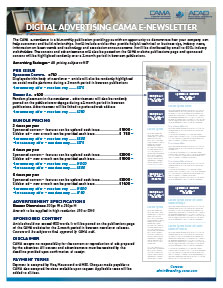Tech Corner: Maximizing Profit starts with Optimizing Inventory
I think we can all agree that the cost of goods contributes to the highest expense in our books. Hence, to have an efficient operation we need to start by optimizing our inventory. Out-of-stock results in lost opportunity and unhappy customers faced with empty machines or missing items on their coffee orders. Over-ordering to avoid stockouts drains cashflow, drive up storage costs, and leads to product expiry. Finding the right balance can be challenging and requires a complex mix of statistical and mathematical data analysis. Proper inventory forecasting requires both historical sales data as well as future prediction that can cause dip or spike in inventory demand. Ensuring that your business has enough inventory to fulfill customer or vending machine orders without spending too much on inventory is key to maximizing profitability.
Where to start? Set up your Key Inventory Metrics.
In order to accurately create a forecasting model, we need to set some key performance indicators within our warehouse. Whichever method you were ordering before - be it visual inspection of your stock level or based on your gut feel, start by quantifying some well-established warehouse metrics.
For example:
Average inventory: The amount of inventory your company has on-hand during a period. The goal is for companies to keep their average inventory consistent over the course of a year
Average inventory = (Beginning inventory + Ending inventory) / 2
Lost sales ratio: The number of days a specific product is out of stock compared to the expected rate of sales for that product. A higher lost sales ratio is a sign your company is running too lean on its stock
Lost sales ratio = (Number of days product is out of stock / 365) x 100
Inventory carrying cost: The percentage of the total inventory value your company pays to store that inventory. This depends on the which inventory is held and the cost of rent.
Inventory carrying costs = (Inventory Capital cost + Storage cost) / Total inventory value x 100
Sell-through rate: A comparison of the amount of inventory sold versus received from a supplier. This metric provides an indication of the efficiency of your purchasing.
Sell-through rate = Number of units sold / Number of units received x 100
Inventory turnover rate: The number of times a company sells and replaces its stock in a period, usually one year. The turnover rate can help to determine if your business has too much inventory relative to how much of that stock is selling
Inventory turnover rate = Cost of goods sold / Average inventory
Average Daily Sale: The number of quantities sold in a day for a particular SKU.
Average Daily Sale = (Number of items sold per SKU per year / 365)
Smaller operations can keep track of this using excel spreadsheets while larger operations tend to utilize warehouse management systems. Regardless of the methods, it is important to be disciplined in reviewing these metrics on a regular basis to fine tune your demand planning.
Setup periodic reporting periods and conduct comparative analysis for feedback on whether you are improving on your metrics. Forecasting becomes an exercise in regularly adjusting your model, especially when there is seasonality and other triggering events which engages in constant reforecasting.


%202023.png)


